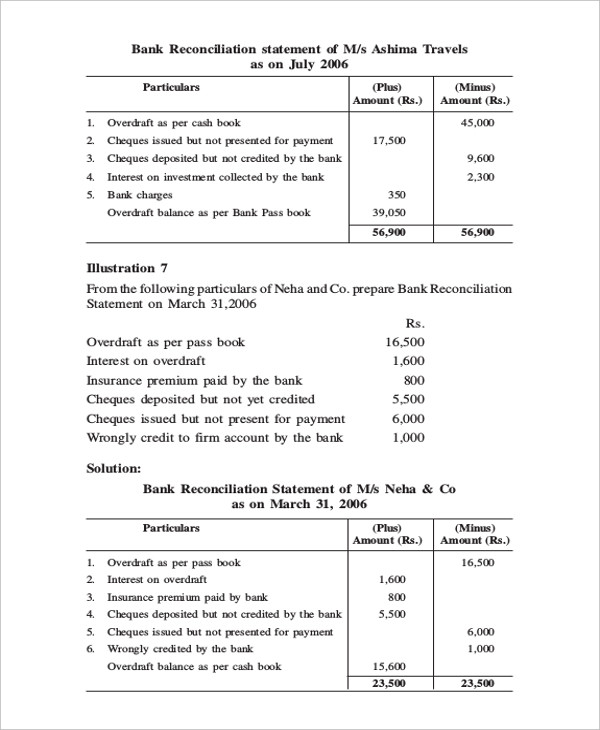
One of the most important steps in cost reconciliation is implementing controls that can prevent future cost discrepancies from occurring. Cost discrepancies can arise due to various factors, such as human errors, inaccurate estimates, changes in scope, fraud, or external events. These factors can affect the accuracy and reliability of the cost data, which can lead to misalignment between the actual and planned costs of a project or process. To avoid these issues, it is essential to establish and enforce effective controls that can monitor, detect, and correct any deviations or anomalies in the cost data. In this section, we will discuss some of the best practices and methods for implementing cost controls from different perspectives, such as project managers, accountants, auditors, and stakeholders. One of the most important steps in cost reconciliation is investigating discrepancies.
Why accounting reconciliation matters for businesses
The account reconciliation process can involve several financial accounts. While reporting CVR to stakeholders monthly may be the norm, that does not prevent you from continuously monitoring cost value reconciliation inputs and metrics. the premium tax credit Cloud-based construction software makes minimizing the lag between data collection and analysis easier. Continuous monitoring allows construction teams to identify emerging issues and make real-time adjustments quickly.
Project Management
One of the most important steps in cost reconciliation is identifying discrepancies or variances between the actual and expected costs of a project or process. Discrepancies can arise due to many factors, such as errors in estimation, changes in scope, delays, quality issues, inflation, currency fluctuations, etc. Identifying and analyzing these discrepancies can help to understand the root causes, assess the impact, and take corrective actions to minimize or eliminate them. In this section, we will discuss some of the methods and best practices for identifying discrepancies in cost reconciliation, and provide some examples to illustrate them. One of the most important steps in cost reconciliation is analyzing the cost components of a project or process. Cost components are the different types of expenses that contribute to the total cost of a project or process, such as materials, labor, equipment, overhead, and so on.
Notes payable (short-term and long-term components)

We use Free Cash Flow, among other measures, to evaluate the Company’s liquidity and its ability to generate cash flow. In addition, we believe that Free Cash Flow helps improve investors’ ability to compare our liquidity with that of other companies. The primary objective of reconciliation is to identify and resolve any discrepancies between the two sets of records. This helps preserve the integrity of financial statements and identifies errors or fraudulent activities. We’ll cover best practices and strategies that organizations can use to streamline their reconciliation processes, minimize errors, and establish a solid foundation for financial management.
Various factors, such as timing differences, missing transactions, and mistakes can cause these discrepancies. For example, when performing bank reconciliation, a business compares its financial statements with the records received from the bank. This helps identify timing delays in deposits, payments, fees, and interest that may have been recorded by one entity but not the other.
Step 3 of 3
- By adhering to these principles, organizations can maintain financial health and make informed decisions based on accurate cost data.
- There should be an explanation for any discrepancies, allowing auditors to easily review financial reports during audits.
- Financial accounts make valuations by taking office and administration expenses into account.
- Our work has been directly cited by organizations including Entrepreneur, Business Insider, Investopedia, Forbes, CNBC, and many others.
- Communication is key when it comes to reconciling the financial accounts of any business.
It helps to maintain accurate cost records and develop a more efficient integrated accounting system. Communication is key when it comes to reconciling the financial accounts of any business. It’s essential for suitable adjustments and the objective of maintaining internal control over financial departments. Adjusted EBITDA is not necessarily a measure of the Company’s ability to fund its cash needs. The Company uses Adjusted EBITDA and Adjusted EBITDA margin, among other measures, to evaluate the Company’s operating performance.
In addition, reconciliations can identify errors or improper recording of financial transactions while helping identify areas of opportunity to improve efficiency and reduce costs. Reconciling costs is essential in the financial accounting process to accurately track and report financial data. To avoid these issues it’s essential to implement precise measures for recording and validating the cost data in an integrated system. Doing so will save time, frustration, and resources for businesses that want to keep their cost and financial accounts in order.
In summary, successful cost reconciliation involves a combination of technology, process optimization, and attention to detail. These case studies demonstrate that organizations can achieve substantial benefits by proactively managing costs, resolving discrepancies, and maintaining financial transparency. By learning from these examples, businesses can master cost reconciliation and drive sustainable growth. In summary, cost reconciliation demands vigilance, collaboration, and robust processes. By addressing these common challenges and learning from real-world scenarios, organizations can master the art of financial accuracy and ensure smooth operations. Remember, precision in cost reconciliation isn’t just about numbers—it’s about maintaining the financial health of the entire enterprise.
Meanwhile, a construction company dealing with equipment and material costs may choose quarterly reconciliations to guarantee their financial processes operate smoothly. This means that the cost items and categories used in the cost reconciliation process should be well-defined and aligned with the project scope, objectives, and deliverables. For example, the cost of labor, materials, equipment, overhead, and contingency should be clearly distinguished and classified according to the project phases, activities, and tasks. This can help avoid confusion, ambiguity, and duplication of cost data among the parties involved in the cost reconciliation process. It can also help ensure that the cost data is relevant, reliable, and comparable across different sources and reports.
